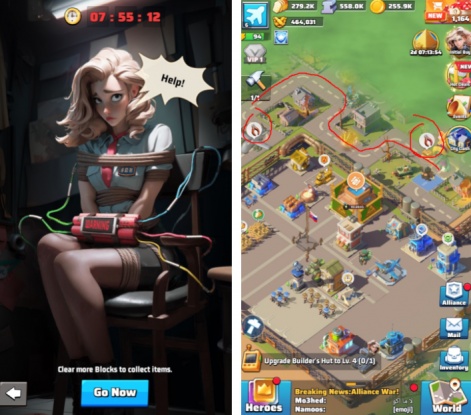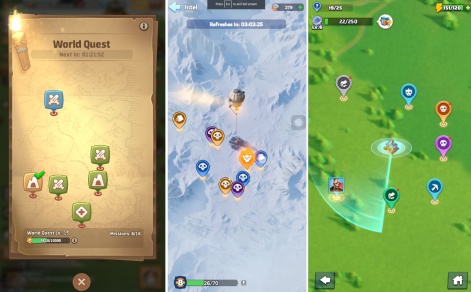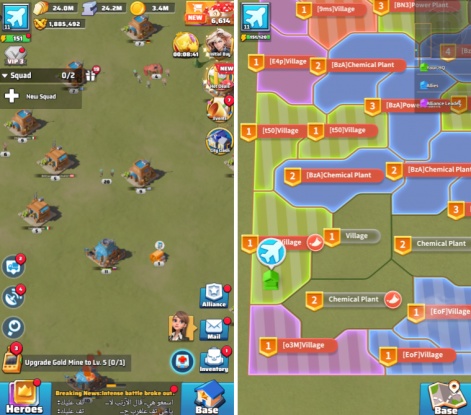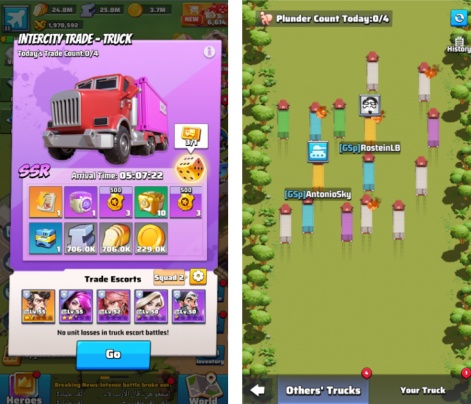Efficient user acquisition is the challenge facing every attempt to successfully scale a game. What once worked like magic may not work at all now, and developers are having to adjust to the changing UA landscape and make changes to their games for any chancce of success.
Speaking of which, Rivergame’s survival game Last War has managed to achieve over $2 million a day revenue and around 200k downloads a day. But how is this possible, and what strategy was used? In this guest post, product and game design consultant Jakub Remiar explains all.
Rivergame’s Last War is the latest evolution of a product that has been adapting to the current user acquisition market conditions. And this is not an accident but a process of many years of iterations. In fact, this is the company behind Top War - released in April 2019 and Top Heroes, which can also be classified as the “new generation of 4X games” - and is similar to Whiteout Survival.
The key connection between all of these games is that they go to great lengths in order to hide the 4X layer of the game during the onboarding of the player.

This funnel starts from the ad creative, continues into store screenshots, and smoothly transitions into actual gameplay in both the early and mid-game. During this time, the game still keeps the illusion that it is actually a game from the creatives, with the hyper-casual gameplay of the mathematical gates. Last War actually has two dedicated modes to this. One where the player completes these puzzle-like single-player missions on a saga (left image) and the fully-fledged autoplay combat mode (right image), where he actually needs to level up heroes with abilities. It is basically a second game built in from the viral creatives that they are using, with all of its elements. Player input is very intuitive and it actually feels like a hyper-casual game from the start.

The whole onboarding experience is fully scripted with a narrator character that actually ends up sitting on a bomb with an eight hour timer that is part of your main base building. She tasks you to collect pliers, in order to cut the wires of the bomb. This may seem irrelevant, but it is actually a play on another viral creative where cutting wires is the centre. This was also already used previously in the Top War tutorial, where players had to cut wires in electro boxes in order to unhide regions of the base, which is exactly the same case here. So I expect this specific setup to be a product of numerous AB tests, which translates viral UA creatives directly into the game functionality.

Even though I wasn’t able to collect all the pliers in the eight hour timer, of course the bomb didn’t blow up, just the timer disappeared and the story “waits” for you anyway to finish the main quest.
As the game progresses, it slowly starts to unfold the 4X feature set. You need to build buildings, train soldiers, generate more resources and finally, the game unlocks the 4X “marching battles” map. This complex step is done very smartly through a “world quest” feature, which is exactly the same feature used in Top Heroes, Whiteout Survival and Last War. It streamlines the 4X map interaction, so that even a non-4X player can find it easy to approach. In older 4X games, you would need to search for monsters, bosses, and resources to farm on the map, either by manually looking near your base or using a search feature.

Now you just follow your semi-randomized icons on your “scanner”, which makes sure to slowly take you through every different encounter type on the 4X map. The more tasks you complete, the higher your scanner level is, and the rarer are your random tasks, with bigger rewards, of course. You don’t need to think about what you need to do, which encounter to farm or even where to look for it. This way, the game makes sure that you have enough resources to continue your progress and teaches you the final step of the 4X layer.

Later, the game turns into your typical 4X scenarios, such as Rise of Kingdoms, Game of War or Mobile Strike, where you need to teleport your town into the nest of your guild and pretty much play a lot every day. Otherwise, you get either kicked or destroyed by your own guild. Then, compete in live events and wars between other guilds for resources and territory, rinse and repeat until only the strongest players and guilds remain in the centre of the map.

Last War also innovates a little bit on some of the features. For instance, your clan mates can help you with your “world quest” task, and you can just open your radar and collect the rewards. There is also a “Plunder mechanic, " which ensures that your heroes from the gates minigame stay relevant in the late game. You need to send them to escort cargo trucks, which other players can attack and also you can attack other player’s trucks on the map. You need multiple teams of heroes, in order to send multiple trucks on long cooldown timers.
This is again another example, where the initial mechanics from the “onboarding game” are still being used in the late game making the feature set very cohesive. Before, we would see this UA tactic done only through putting playables of your UA creatives into the early funnel, with games such as Hero Wars, Storm Shot and X-Hero. This was obviously not enough and players would eventually discover that there is no more gameplay they saw in the creatives. Here in the “new wave” of 4X games, it is still present and utilised in the whole game, therefore your UA team literally dictates what should be your product’s onboarding and even gameplay mechanics.
This new strategy was already successfully executed by Top War, Kingdom Guard, and Whiteout Survival last year, resulting in giant commercial success. It is currently making around $2 million a day in the Western market. It uses a simulation game instead - taken directly from Century game's other title, Frozen City, to mask the 4X layer. Last War is currently doing $2.8 million in revenue a day and continues to scale up. I think that it is mainly because the UA creative is paired much more closely to the initial gameplay, and the 4X layer is introduced much faster compared to the other mentioned games. I think that this setup, where UA directly overlaps with your product design, will also become mandatory in other genres in the future. If you don’t have other means of lowering your CPIs, such as having a world known IP, there is no other way to achieve this massive scale from scratch currently.
Edited by Paige Cook























